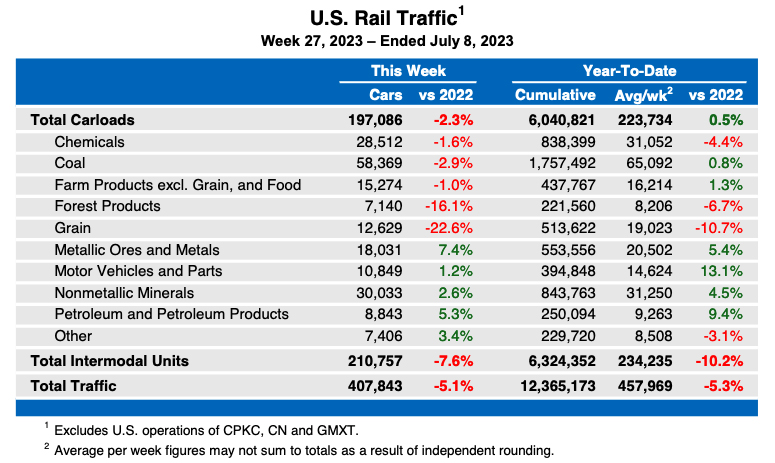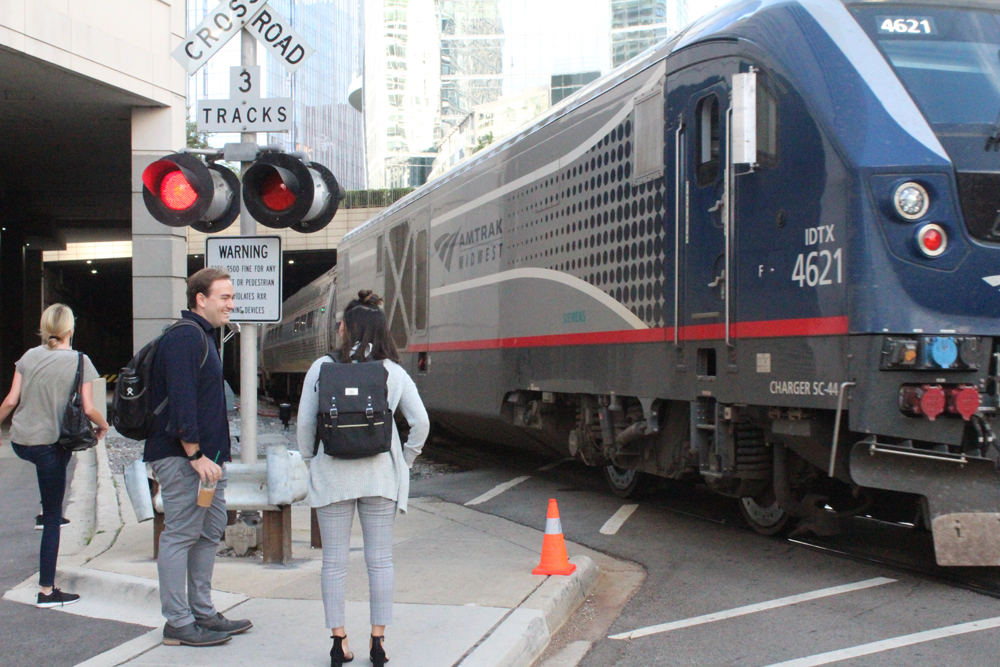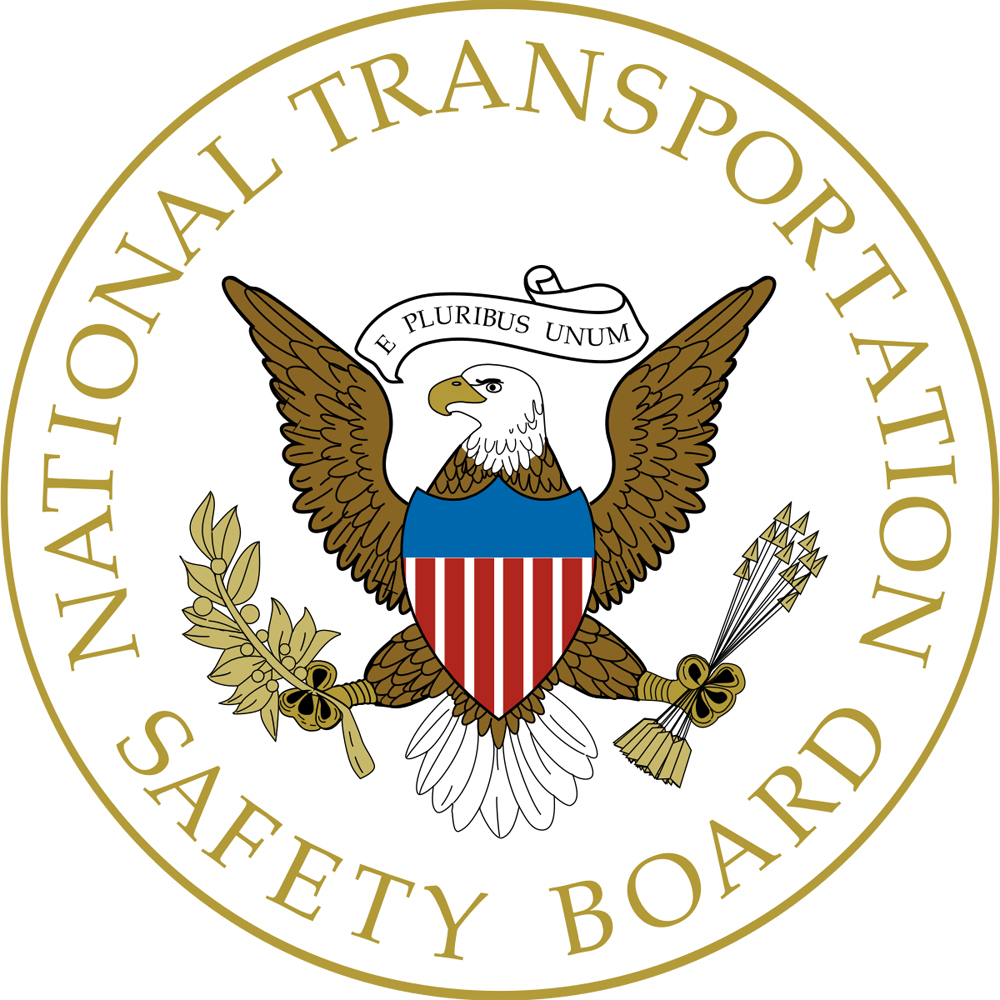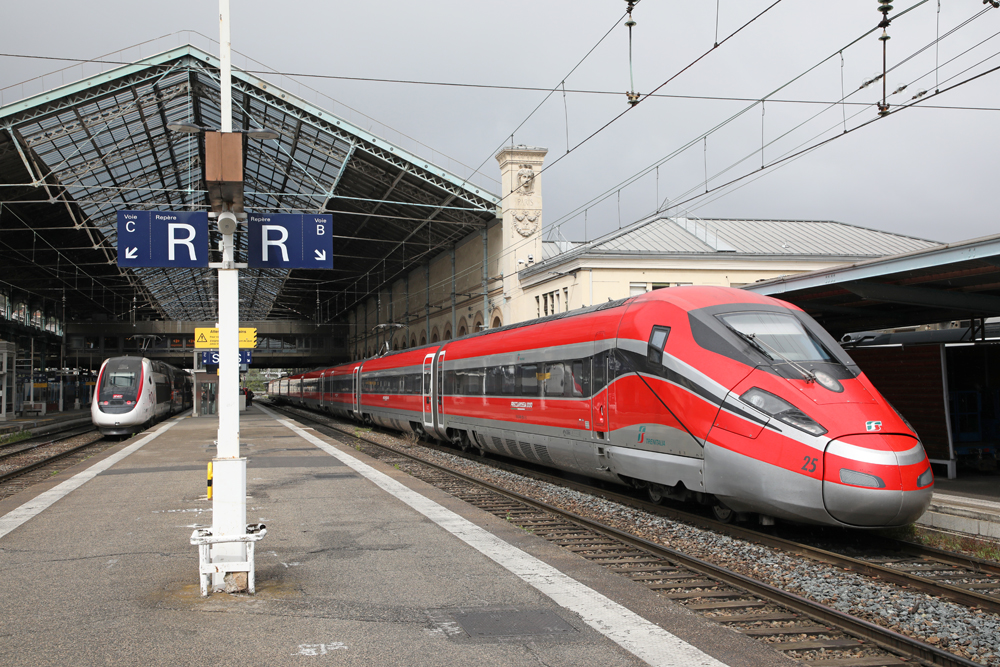
WASHINGTON — U.S. rail traffic for the week ending July 8, 2023, was down 5.1% compared to the same week a year earlier, according to statistics from the Association of American Railroads.
The total of 407,843 carloads and intermodal units included 197,086 carloads, down 2.3% from the corresponding week in 2022, while the 210,757 containers and trailers represented a 7.6% drop in intermodal traffic.
Year-to-date totals through 27 weeks show carload traffic up 0.5% and intermodal volume down 10.2% for total decline of 5.3% compared to the same period a year ago.
North American totals were hurt in in part by a strike in Canada that has closed ports in British Columbia since July 1. Totals for 12 reporting U.S., Canadian, and Mexican railroads include 296,283 carloads, down 2.7% from the same week in 2022, and 260,069 intermodal units, down 16.8%. The overall total of 556,352 carloads and intermodal units represents a 9.8% drop. In Canada, intermodal traffic was just 38,849 intermodal units, down 46.2% from the same week a year ago.
The overall North American traffic figure through 27 weeks is down 4.2% compared to the same period in 2022.














wait until down the toilet figures come out next week, it is obvious that a good portion of the IM traffic took to the roads during the Northeast floods did not even attempt to detour trains anymore.
I agree. And since class ones have torn out so much track over the years they’ve left themselves and their customers with little choice as far as detours are concerned. It’s much simpler to put the loads on the highways and hope most of it returns when the line reopens.